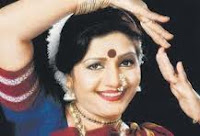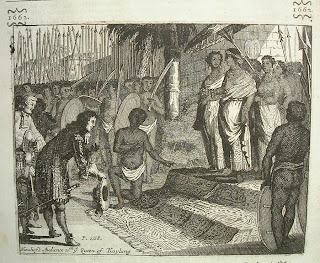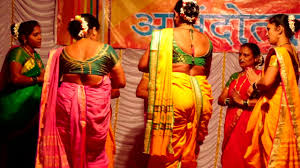Vanishing Folk Art of Andhra Pradesh-Baindla Katha-Jamukula Katha
I was invited for a Book Release function on "Baindla Katha Gaanam" by Sri Bonalu Prakash at Sundariaya Vignana Kendra in Hyderabad.
Baindla Katha???? What is all about??? My curiosity about this art form made me attend the function. Thanks to the organizers who even arranged for the Baindla katha performers by the Ranjeet troupe from Khammam District of Andhra Pradesh.
Baindla Katha or Jamukula Katha as it is also known is performed by Schedula Caste-SC groups in India. These performers and this folk performing art is found in more than six states in India like Andhra Pradesh, Karnataka, Tamil Nadu, Orissa, Chhattisgarh, and parts of Madhya Pradesh as per the analysis made by Prof. Jayadhir Thirumal Rao (Specialization in Telugu Bhasha Sahitya and Kalalu-Telugu Language, Literature, Culture and Folklore). Here in Andhra Pradesh, there are two groups called Malas and Madigas in the Schedule Castes group. Both these performers also known as Bavinidu or Baindla, perform this folk art form narrating chiefly Yellamma or Renuka devi stories.
The performers use a percussion instrument called Jamidika called in the Telangana region and Jamuku in Andhra and Coastal region of Andhra Pradesh.
In Telangana, the ballad singing by this community is still ritualistic, whereas in coastal Andhra it has become a folk performing art. Females also assist the male artists in coastal Andhra.
It is quite interesting to know about the make of this unique instrument Jamidika. Early days, earthen pots were used and covered with the abdomen skin of a dead ox, and the central nerve of the spinal cord of the ox is used as string that when moved with fingers gives the powerful sound penetrating equivalent to hundred canons. In later years, the earthen pots were replaced by wood and now metals like copper/brass/bronze are used for longevity.
The main signer ties the thick anklets called "Kejjalu", He is accompanied by the one Vantha singer holding the sruthimani (sruthi is a must for any music be Classical folk--The singer's voice should match with its sound) and one Jamidika player. They bow to Goddess Yellamma and narrate her stories. This lady deity or Goddess Yellamma-Renuka devi is worshipped chiefly by low-caste groups across the country. Of course, she is also the main lady deity of the many families of upper castes too. In fact, special ceremonies and worship are conducted during marriages, the birth of a child, and even at the death of family members. These performers sing, dance and narrate Yellamma's war against Kakatiya King Pratap Rudra. Is it not interesting to know that this lady Goddess belongs to the law caste group challenges and fights against Pratap Rudra??? This clearly indicates the role of women of lower caste fighting for the injustice done by the rulers and kings. I see this as a strong-willed and empowered lady like Sammakka-Sarakka.
They also narrate around ten-twelve stories continuously for five nights. These oral narratives are disappearing quickly before us and we are not making any attempt to save them in their original form. There are many artists who have derived much inspiration from these folk art forms and have adapted them to suit the modern period be it for awareness building or be it a revolutionary kind. But, for the performers, this art form is mainly living and not just the art form.
I also wonder, when I think or get into a discussion on various kinds of music and musical instruments. The wonder is all the musical instrumental sounds are now available in a single instrument called CASIO-KEYBOARD. I am not sure whether the Jamidika instrument sound is also available on this or not. What would happen to all these instruments in due course? No answer???
Like any other folk art from this art form shall also perish!?













Comments
I am interested to Know more about Folklore and dance forms of India.
Why are they called Untouchables even now?
I am interested to Know more about Folklore and dance forms of India.
Why are they called Untouchables even now?
RK---Can you expand!!!
Thanks for your comment. I see the art form and not the caste. All these caste. Again, in different region they are classified differently.
You can also go through Mallanna Charitra
Regards
Sphoorthi